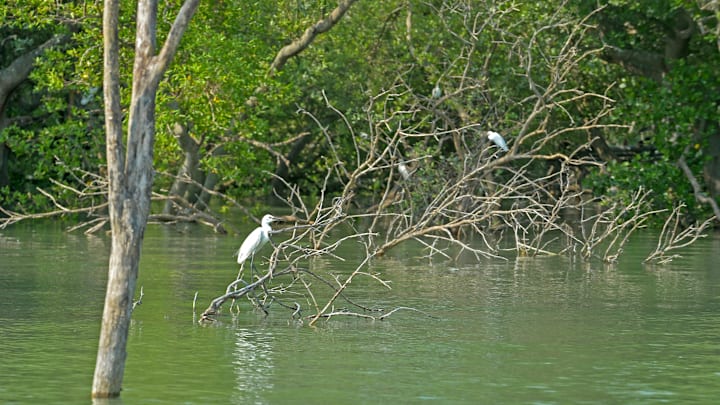The Role of Mangroves in Coastal Protection and Ecosystem Health

Mangroves, unique coastal forests found in tropical and subtropical regions, are vital ecosystems that provide numerous ecological, social, and economic benefits. These salt-tolerant trees and shrubs grow along coastlines, estuaries, and riverbanks, forming dense and intricate root systems that anchor them in the intertidal zone. The role of mangroves in coastal protection and ecosystem health is essential for maintaining the resilience and sustainability of coastal environments and communities.
Mangroves play a crucial role in protecting coastlines from erosion and storm surges. Their complex root systems stabilize the soil and reduce the impact of waves and currents, preventing the loss of valuable land and protecting infrastructure. During storms and hurricanes, mangroves act as natural barriers, absorbing and dissipating wave energy and reducing the force of storm surges. This protective function is particularly important for low-lying coastal areas and islands that are vulnerable to the impacts of extreme weather events and sea level rise.
In addition to coastal protection, mangroves are essential for maintaining water quality and supporting marine life. The roots of mangrove trees trap sediments, nutrients, and pollutants, preventing them from entering the open ocean and estuaries. This filtration process improves water clarity and quality, benefiting nearby coral reefs, seagrass beds, and other marine habitats. Mangroves also provide nursery grounds for a wide range of fish, crustaceans, and other marine organisms. The sheltered environment of mangrove forests offers protection and abundant food for juvenile fish, supporting commercial and subsistence fisheries and contributing to the productivity of coastal ecosystems.
Mangroves are biodiversity hotspots, supporting a rich array of plant and animal species. They provide habitat for numerous birds, mammals, reptiles, and invertebrates, many of which are adapted to the unique conditions of mangrove environments. The diversity of species in mangroves contributes to the overall health and resilience of coastal ecosystems. Mangroves also play a crucial role in carbon sequestration, storing large amounts of carbon in their biomass and soils. This carbon storage capacity makes mangroves important for mitigating climate change and reducing greenhouse gas emissions.
Human societies benefit from mangroves in various ways, including food security, livelihoods, and cultural practices. Mangrove forests provide resources such as timber, fuelwood, and non-timber forest products, supporting local economies and traditional uses. They offer recreational opportunities, such as fishing, birdwatching, and ecotourism, which generate income and promote environmental awareness. Mangroves also hold cultural and spiritual significance for many coastal communities, forming an integral part of their heritage and identity.
Despite their importance, mangroves are under significant threat from human activities and environmental pressures. Coastal development, aquaculture, agriculture, and pollution are leading to the widespread loss and degradation of mangrove forests. The conversion of mangrove areas to shrimp ponds, rice paddies, and urban infrastructure reduces the extent of these vital ecosystems and diminishes their protective and ecological functions. Climate change, sea level rise, and increased frequency of extreme weather events further exacerbate the pressures on mangroves.
Efforts to conserve and restore mangroves are essential for maintaining their ecological and social benefits. Protecting existing mangrove forests through the establishment of protected areas, legal frameworks, and community-based conservation initiatives is a critical strategy. Restoration projects, such as replanting and natural regeneration, can help rehabilitate degraded mangrove areas and enhance their resilience. Sustainable management practices that balance the use of mangrove resources with conservation goals are also important for ensuring the long-term health of these ecosystems.
Engaging local communities and stakeholders in mangrove conservation is vital for the success of these efforts. Recognizing the rights, knowledge, and needs of indigenous and local communities ensures that conservation initiatives are socially inclusive and culturally appropriate. Community-based management approaches can empower local people to take an active role in protecting and sustainably using mangrove resources. Education and awareness campaigns can foster a greater appreciation of mangroves and encourage sustainable behaviors.
International cooperation and policies play a crucial role in addressing the global challenges of mangrove loss and degradation. Initiatives such as the Ramsar Convention, the Convention on Biological Diversity, and the United Nations' Sustainable Development Goals provide a framework for coordinated action to protect and restore mangroves. Financial incentives, such as carbon offset programs and payment for ecosystem services, can support mangrove conservation and restoration efforts.
In conclusion, mangroves are vital ecosystems that play a crucial role in coastal protection, water quality, biodiversity, and climate regulation. Their ability to stabilize coastlines, support marine life, and sequester carbon underscores their ecological importance. However, mangroves face significant threats from human activities and environmental pressures. Conserving and restoring mangroves is essential for ensuring their continued provision of ecosystem services and benefits. By recognizing the value of mangroves and taking concerted action to protect them, we can preserve these vital ecosystems for the benefit of present and future generations.